第22章
Worsted Stuffi (pieces)13,5693,415 7,428Camlets13,3748,034 4,470Long ells 91,531 75,78496,642Woollens 62,731 56,99638,553Printed Cottons 100,615 8x,150 281,784Plain Cottons 2,998,1261,859,740 2,817,624Cotton Twist lbs2,640,0985,324,050 5,579,600Now all these arguments and illustrations explain nothing beyond the reaction following the overtrade of 1843-45, It is a phenomenon by no means peculiar to the Chinese trade, that a sudden expansion of commerce should be followed by its violent contractions, or that a new market, at its opening. should be choked by British oversupplies; the articles thrown upon it being not very nicely calculated, in regard either to the actual wants or the paying powers of the consumers. In fact, this is a standing feature in the history of the markets of the world. On Napoleon's fall, after the opening of the European continent, British exports proved so disproportionate to the continental faculties of absorption that "the transition from war to peace" proved more disastrous than the continental system itself.
Canning's recognition of the independence of the Spanish colonies in America was also instrumental in producing the commercial crisis of 1825 Wares calculated for the meridian of Moscow were then dispatched to Mexico and Colombia. And in our own day, notwithstanding its elasticity, even Australia has not escaped the fate common to all new markets, of having its powers of consumption as well as its means of payment over-stocked. The phenomenon peculiar to the Chinese market is this: that since its opening by the treaty of 1842, the export to Great Britain of tea and silk, of Chinese produce, has continually been expanding, while the import trade into China of British manufactures has, on the whole, remained stationary. The continuous and increasing balance of trade in favour of China might be said to bear an analogy to the state of commercial balance between Russia and Great Britain; but then, in the latter case, everything is explained by the protective policy of Russia, while the Chinese import duties are lower than those of any other country England trades with. The aggregate value of Chinese exports to England, which before 1842 might be rated at about IC.7,000,000, amounted in 1856 to the sum of about IC 9,500,000. While the quantity of tea imported into Great Britain never reached more than 50,000,000 lbs. before 1842, it had swollen in 1856 to about 90,000,000lbs. On the other hand, the importance of the British import of Chinese silks only dates from 1852. Its progress may be computed from the following figures:
1852. 1853. 1854. 1855. 1856.
Silk imp'd lbs 2,418,343 2,838,047 4,576,706 4,436,962 3,723,693Value ? .... .... 3,318,II2 3,013,396 3,676,116Now take, on the other hand, the movement of the BRITISH EXPORTS TO CHINAVALUED IN POUNDS STERLING.
1834 ?42,852
18351,074,708
18361,326,388
18381,204,356
For the period following the opening of the market in 1842 and the acquisition of Hong Kong by the British, we find the following returns:
1845 ?,359,000
18461,200,000
18481,445,950
18522,508,399
18531,749,597
18541,000,716
18551,122,241
1856upward of 2,000,000
The Economist tries to account for the stationary and relatively decreasing imports of British manufacture into the Chinese market by foreign competition, and Mr. Cooke is again quoted to bear witness to this proposition. According to this authority, the English are beaten by fair competition in the Chinese market in many branches of trade.
The Americans, he says, beat the English in drills and sheetings. At Shanghai in 1856 the imports were 221,716 pieces of American drills, against 8,745 English, and 14,420 of American sheetings, against 1,240English. In woollen goods, on the other hand, Germany and Russia are said to press hardly on their English rivals. We want no other proof than this illustration to convince us that Mr. Cooke and the Economist are both mistaken in the appreciation of the Chinese market. They consider as limited to the Anglo-Chinese trade features which are exactly reproduced in the trade between the United States and the Celestial Empire. In 1837, the excess of the Chinese exports to the United States over the imports into China was about ?60,000. During the period since the treaty of 1842, the United States have received an annual average of ?,000,000 in Chinese produce, for which we paid in American merchandise ?00,000. Of the ?,602,849 to which the aggregate imports into Shanghai, exclusive of specie and opium, amounted in 1855, England supplied ?,122,24I, America ?72,708, and other countries ?07,900; while the exports reached a total of ?2,603,540, of which ?,405,040 were to England, ?,396,406 to America, and ?02,088 to other countries. Compare only the American exports to the value of ?72,708 with their imports from Shanghai exceeding ?,000,000. If, nevertheless, American competition has, to any sensible degree, made inroads on British traffic, how limited a field of employment for the aggregate commerce of foreign nations the Chinese market must offer.
The last cause assigned to the trifling importance the Chinese import market has assumed since its opening in 1842, is the Chinese revolution, but notwithstanding that revolution, the exports to China relatively [swelled] in 1851-52, in the general increase of trade, and, during the whole of the revolutionary epoch, the opium trade, instead of falling off, rapidly obtained colossal dimensions. However that may be, this much will be admitted, that all the obstacles to foreign imports originating in the disordered state of the empire must be increased, instead of being diminished, by the late piratical war, and the fresh humiliations heaped on the ruling dynasty.